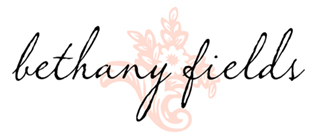Writing your Artist Statement
March 18, 2022 – Written by Bethany Fields
Ah the artist’s statement. Everyone’s favorite thing to write! hahaha. Not really! In fact, this scene from My Fair Lady about sums up how most artist’s feel about writing their statement.
Words, words, words!! I’m so sick of words!!
Advertisement
I have pulled my hair out so many times trying to come up with a good statement to include with my bio. These are challenging and often changing. It’s taken a lot of thinking and plenty of rough drafts to formulate exactly what to say in only a short paragraph.
Everyone can identify! We want to convey an eloquent message to our audience but sometimes it’s hard to “see” who we really are without stepping outside and doing some hard thinking. Oh and we have to make the statement beautiful and creative, too. With words, words, words!!
First things first, what is an artist’s statement?
An artist’s statement is a written brief description of your work. The brief explanation is to give the viewer more understanding of the “whys” or your work.
Your statement tells your viewpoint of what inspires you, how you approach your work, and the more esoteric qualities of your process This is a place for you to wax eloquent on the meaning and exploration of your art (but not too eloquent as we need to keep these brief).
The average artist statement is only around 1-2 short paragraphs. If someone wants more information, I include my longer “bio.”
Here are some good tips on how to go about writing your artist statement.
Advertisement
Writing your Artist Statement
• Write in first person.
Instead of third person (“Bethany approaches her work”), write “I approach my work.” You are speaking directly to someone and the language needs to be as if they were standing in front of you and you were talking to them.
• Write as if you ARE talking to someone.
Forget the fear of the writing. When you write just like you have a conversation, you can relax and just talk…think stream of consciousness. After you’ve written, then you can edit to change sentence structure and for grammar. The best writing advice I was ever given was to write first, edit later. Avoid editing while you write so you’re not constantly interrupting your thoughts to go back and fix sentences. After your writing session, have a separate editing session.
• Sit down with your work. What feelings does it produce? What words come to mind? Make a list.
As a fun exercise, sit down and write an entire page of descriptions of your work. Write any word that comes to mind. Think of the why, what, when, and where of your work. Having too much writing is always better than not enough! Later, you can pull the best, most concise parts for your statement. (Keep the other info, too! It could be used in your longer bio).
For instance, my words about my work may include:
- memory
- soft
- joy
- gentle
- reminisce
- focus
- love
- color
- nuance
- etc.

• Read and research other artist’s statements.
What words are they using? How are they describing their process? What order is their description? What is their formula within their statement?
It can be as simple as answering these four questions:
1. What is your approach in the studio?
2. What inspires you?
3. How does this process fit into your work?
4. What do you hope the viewer sees in your artwork?
5. What keeps you coming back to the studio day after day?
Draft several answers for each question. Layer them together in different combinations. Play with your sentence structure so not every sentence starts with “I.”
• Pull out your thesaurus and look for synonyms that avoid the typical.
Try to grab that audience with the very first sentence. Think if anyone has ever reviewed your work or commented in a guest book about something you’ve created. How did they describe your work? You can also ask your friends what they see or feel about your art!

Some things to avoid:
• Don’t talk in third person for your artist’s resume (this can be reserved for your bio).
• Avoid generic art speak that everyone else is using.
“I want to capture light” and “I want to capture beauty” are both overused…(and yes, I’ve used both of them!!!…haha) At some point, these can sound cliche, rote, and without imagination. We have to stand out!
What makes you unique?
Save this Post to Pinterest


Above all, know that your statement can constantly change. It will change as you grow closer to your work! Just get one written and then you can edit it to your heart’s desire.
Here is my current artist statement:
Everyday I approach the easel with the excitement of possibility. I love old houses and lonesome valleys, trees, and skies. My paintings are a time-capsule…sometimes vivid interpretations of a place, more often soft around the edges. While the subject may be a simple creek or path, it is really a painting of memory and hope; I put joy and peace in my paintings as surely as red, blue, or yellow. Pastel is the perfect medium to tell a story. It is swift and immediate while allowing tender emotion to come forward.
My primary focus is the American West landscape of the Llano Estacado and surrounding areas. A favorite location for inspiration is beautiful Palo Duro Canyon near Canyon, Texas as well as the high plains of the Texas Panhandle. In travels across the country, I have gathered a plethora of inspiration and hope my love of the outdoors inspires and connects.
I can always trim this down to one paragraph if needed. Each publication has different requirements and it’s good to be flexible!
xoxo,
Bethany

















